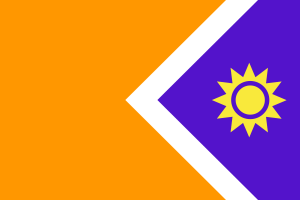Language/Marathi/Grammar/Nouns
| ◀️ Telling Time — Previous Lesson | Next Lesson — Pronouns ▶️ |
Hi Marathi learners! 😊
In this lesson, we will be focusing on Marathi Grammar with a special emphasis on Nouns. Nouns are an important part of any language and Marathi is no exception. With this lesson, you will learn all about Marathi Nouns from the basics to the advanced level. So, let's get started!
Introduction
Nouns are words that are used to name a person, place or thing. In Marathi, nouns are called शब्द (shabd). Nouns are the building blocks of any sentence, so it's important to have a good understanding of them. In this lesson, we will discuss the Marathi Noun system, its properties, types, and usages. If you are a beginner, this lesson is a must-read for you. If you are an intermediate or advanced level learner, this lesson will help you polish your Marathi Grammar skills.
Don't hesitate to look into these other pages after completing this lesson: Future Tense, Pronouns, Adverbs & Negation.
Properties of Marathi Nouns
In Marathi, like in any other language, nouns have properties such as gender, number, and case. Now let us see what they mean.
Gender (लिंग)
In Marathi Grammar, Nouns have two genders, masculine and feminine.! Gender (लिंग) is a characteristic of a noun that determines its agreement with other words such as adjectives, pronouns, and verbs. For example, मुलगा (mula-gaa) is a masculine noun meaning a boy, while मुलगी (mula-gii) is a feminine noun meaning a girl. If you are unsure of the gender of a particular noun, look for the gender of the word that modifies it, this will give you a clue about the gender of the noun.
Here is an example dialogue to see gender in practical use:
- Person 1: हा मुलगा काय आहे? (haa mula-gaa kaa aahe?) (What is this boy?)
- Person 2: हा मुलगा चवन्नीचा आहे. (haa mula-gaa chavanniichaa aahe.) (This boy is a thief.)
In the above dialogue, मुलगा (mula-gaa - boy) is a masculine noun.
Number (वचन)
Number determines whether a noun is singular or plural. In Marathi, as in other languages, a singular noun constitutes a single entity whereas a plural noun refers to more than one entity. Marathi Nouns use various suffixes to indicate the number. Here is an example of how we pluralize:
The noun पुस्तक (pustak - book) The plural form of पुस्तक (pustak) is पुस्तके (pustak-e).
| Marathi | Pronunciation | English |
|---|---|---|
| पुस्तक | pustak | book (singular) |
| पुस्तके | pustak-e | books (plural) |
Case (विभक्ती)
Case is a property of Noun that indicates its function in a sentence. In Marathi Grammar, Nouns have six cases - Nominative, Accusative, Dative, Instrumental, Ablative, and Genitive. Each case has a different suffix.
Types of Marathi Nouns
In Marathi, Nouns are classified into several different types such as Proper Nouns, Common Nouns, Concrete Nouns, Abstract Nouns, and Mass Nouns. Let us take a look at each of them.
Proper Nouns (विशेषणीय शब्द)
Proper Nouns are the names of specific people, places, or things. They always begin with a capital letter. They are not preceded by articles.
| Marathi | Pronunciation | English |
|---|---|---|
| राजे | raaje | Raj (name of a person) |
| मुंबई | mumbaai | Mumbai (name of a place) |
Common Nouns (सामान्य शब्द)
Common Nouns are the words that denote a general or common type of person, place, thing, or an idea. They are preceded by articles like एक (eka) (means a/an in English) when singular and थें (theM) when plural.
| Marathi | Pronunciation | English |
|---|---|---|
| मुलगा | mula-gaa | boy |
| मुलगी | mula-gii | girl |
Concrete Nouns (वास्तविक शब्द)
Concrete Nouns are the ones that indicate things that can be perceived by the five senses i.e, taste, touch, sight, smell, and sound.
| Marathi | Pronunciation | English |
|---|---|---|
| परफेक्ट कप | perfect kap | Perfect cup (tactile) |
Abstract Nouns (अलौकिक शब्द)
Abstraction Nouns refer to something that cannot be seen, heard, touched, smelled, or tasted. They are feelings, emotions, concepts, and ideas.
| Marathi | Pronunciation | English |
|---|---|---|
| शांतता | shaanttaa | Calmness (feeling) |
| स्वाध्याय | svaadhyaa-y | Self-study (concept) |
Mass Nouns (समूह शब्द)
Mass Nouns are used for substances or materials that are not counted (e.g. water, oil, sugar, salt, tea). In Marathi, they are used as singular words.
| Marathi | Pronunciation | English |
|---|---|---|
| तुप | tup | butter |
| शहद | shahad | honey |
Conclusion
In this lesson, we discussed Marathi Nouns comprehensively. Now you should have a better understanding of how to use Marathi Nouns in sentences. However, practice is the key to success. So, keep practicing and use the Polyglot Club website to connect with native speakers and ask them any questions you have. Don't forget to check out the Grammar page and other Marathi lessons on Marathi language. Happy learning! 😊
➡ If you have any questions, please ask them in the comments section below.
➡ Feel free to edit this wiki page if you think it can be improved. 😎
Sources
- Marathi grammar - Wikipedia
- MARATHI GRAMMAR SARVANAAM WORKSHEETS | Nouns ...
- MARATHI GRAMMAR SARVANAAM WORKSHEETS | Grammar for ...
Upon wrapping up this lesson, take a look at these related pages: Marathi Grammar: Spelling and grammar check, Marathi Grammar: Introduction to Marathi grammar: Verbs, Conjunctions & Give your Opinion.
Videos
Grammar concept - Common vs proper nouns (Marathi) - YouTube
Other Lessons
- How to Use Have
- Adjectives
- Pronouns
- How to Use Be
- Questions
- Nouns namo नामो
- Conditional Mood
- Give your Opinion
- Gender
| ◀️ Telling Time — Previous Lesson | Next Lesson — Pronouns ▶️ |

